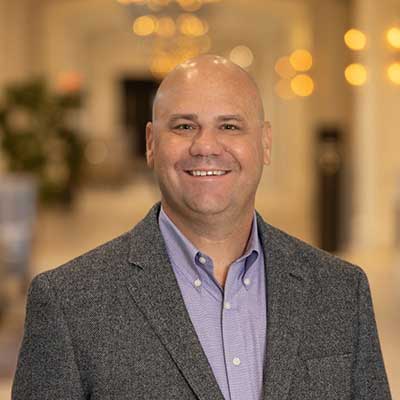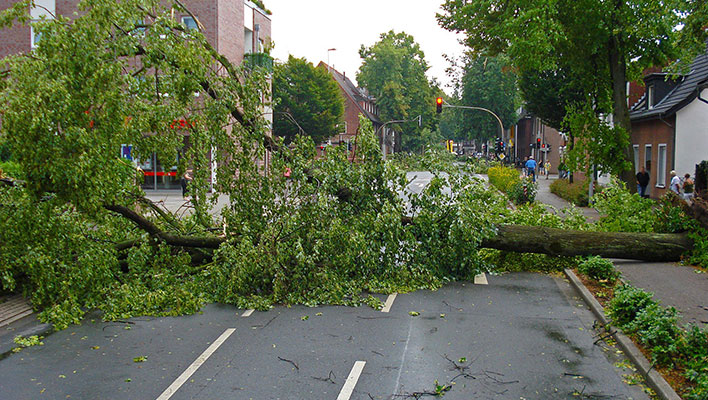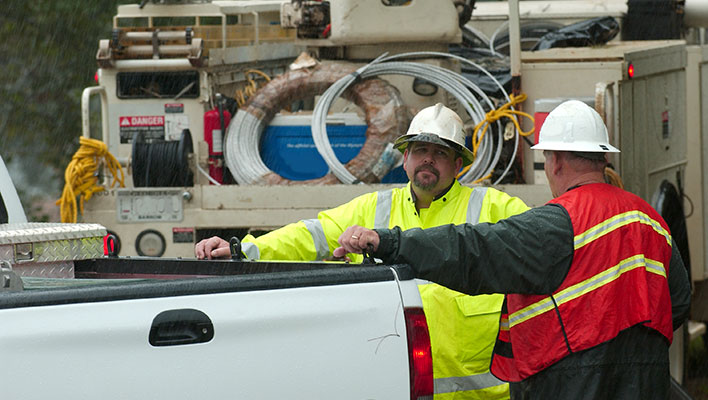As electric utility leaders think about the strategies needed to navigate the workforce mobility challenges of today and tomorrow, multiple business priorities are top of mind, including a big crew change that leaves teams understaffed and reliant on contractors, increasing storm events, and an urgent need to enhance situational awareness. Jason Rhoades, Customer Success Manager at ARCOS, brings his voice of authority to our blog where his 23 years of experience on the front lines of the electric industry make him uniquely qualified to provide pragmatic insights, from adoption of new technology and unleashing crew performance to managing a hybrid workforce and meeting even the darkest sky work head on with the digital utility of the future.
Unexpected efficiency – like many teams forced to uproot and work from home during the early days of the pandemic, my team suddenly discovered a whole new level of efficiency when the daily distractions of office work went away, and we embraced digital tools to get the job done. That’s when I was leading a large organization of more than 250 employees and hundreds of contractors for AEP‘s Columbus electric distribution district serving hundreds of thousands of customers. COVID hit and we lost visibility into everyday work. I couldn’t walk the floor and see the white boards that utility teams pervasively rely on or talk face to face with my line coordinators and set priorities. It was a digital transformation trial by fire, and we came out of the pandemic years ahead by using technology to not only get the job done, but get it done better, faster, and safer.
It shouldn’t have taken a pandemic to force digital transformation but the electric utility industry, like many others, is slow to change if tried and true methods provide a path of least resistance. But one critical area that is urgently in need of digital transformation is storm restoration, where crew safety, millions of dollars, and customers are at greatest risk. Like the unexpected efficiency forced by the pandemic, we need to shift mindsets from sitting around a conference room solving problems on a white board. Instead, we need to bring everyone together around a shared view of situational awareness where damage assessments are reported in real time and repairs immediately scheduled vs. waiting to the end of the day to prioritize, and we restore power more safely and faster than ever.
Storm restoration is where the road meets the rubber when it comes to putting technology to work to improve safety, reduce field and administrative costs, and get the lights back on faster. In my fifth and final blog in a series exploring the digital utility of the future I’d like to showcase how mobile workforce management technology drove massive operational and cost efficiencies for the recent Hurricane Ian. Be sure to read or revisit my earlier blogs where I explored how electric utilities have embraced technology over the decades and argued that people power the grid and that field workers are where digital transformation must start. And as we navigate the big crew change happening right now, it’s vital to take the linemen culture into account and treat contractors like your own in order to succeed at digital transformation.
I ran multiple storms remotely during covid, all from my home office before retiring from AEP. The last one I consider a going away present from mother nature, a powerful June thunderstorm that knocked out power for 200,000 customers. Managing large storm restorations is all about scalability of your Incident Command Structure and managing the tactical scaleup of a large pool of employees, native contractors, and non-native crews who respond as part of mutual assistance agreements, about 2,400 in this case. Technology like ARCOS Callout and Crew Manager helped us manage this complexity by automatically creating rosters, assigning circuits to crews, and even booking hotel rooms for non-native contractors. We got the lights back on a faster, saving money for the company and our customers. Now imagine what it would take to get the lights back on for 3,000,000 customers.
When the winds have died down, restoration begins but getting out there and not knowing what you’ll find makes it impossible to know what materials you need to bring or where to best deploy crews. In the past, incident commanders fly blind for most of the day as they wait for damage assessors to make their sweeps and report back in at the end of the day. And only then will the repair work orders be issued, further delaying restoration.
From my own experience managing storm restoration, I know that hurricanes place tremendous burdens on the linemen called on to respond as well as the administrative teams who must also scaleup, underscoring the need to effectively integrate non-native back offices with the ICS. It’s a constant balancing act to draw on just the right mix of crews and administrative support. At the same time, incident commanders are constantly orchestrating material requirements, repositioning people, and assets, and continuously reprioritizing as nursing homes, water utilities, police, fire departments, and other critical services are energized, finally enabling crews to focus on residential customers.
Through all of this, situational awareness is vital for ensuring safe operations and decreasing restoration times yet the sheer magnitude of managing people, work, and assets across so many non-native crews and disconnected information systems results in a fragmented view of what’s actually happening on the ground. More than ever before, electric utilities have the greatest need and greatest opportunity to create a single pane of glass through which to see and manage storm restoration with mobile workforce management technology like ARCOS Mobile Workbench.
In 2005, Hurricane Wilma (a category 3 storm) hit Florida’s southwestern coast, knocking out power for more than 3,000,000 customers, requiring 18 days to restore power to 90% of the area. A big cat 4 hurricane, Ian struck the same area causing the same level of outages in September of this year. In stark contrast to Willma, an ARCOS customer responsible for restoring power to more than 2,000,000 customers restored 90% of service in only 6 days after Ian made landfall. That isn’t just an incremental improvement in storm restoration, that’s a giant leap forward.
This success is due to the Florida electric utility’s outstanding work over the last decade in analyzing past storm response, helping it refine disaster planning, pre-position equipment, manage logistics, and draw on the right mix of mutual assistance and administrative support. Adding tremendous fire power to its storm response is ARCOS Mobile Workbench, which the electric utility sees as a strategic component for damage assessment and repair.
Armed with advanced mobile workforce management technology, more than 20,000 field workers were deployed along with thousands of back-office staff. Incredibly, half of the service in its area of operation was restored within 24 hours after the hurricane. To achieve this astonishing level of efficiency, each lineman had pre-installed the ARCOS Mobile Workbench app on their phones as part of the restoration ramp-up process, enabling them to deploy and begin streaming live damage assessments. Taking a decentralized approach, the incident commander deployed repair teams alongside damage assessors. Damage assessors scanned bar codes on the equipment needing repair and attached photos to their report. Combined with highly effective logistics and pre-positioning, this allowed repair teams to follow damage assessors and make immediate repairs.
The big takeaway for Hurricane Ian is that the amazing restoration work was powered by an unprecedented level of situational awareness where everything came together on a map in one view for the ICS team. But Mobile Workbench also enabled field teams to seamlessly switch between the circuit they only needed to work, damage assessment, and repair. No distractions, just a laser focus on finding and fixing. Unexpected efficiency? Our customer has long planned for a storm like Ian with their continuous improvement process and investments in mobile workforce management technology. So, I’d say the massive time savings and millions in costs avoided weren’t too unexpected, but it was sure amazing to see.
That’s a wrap for my blog series, thanks for reading along. As always, I welcome any questions or conversations, so feel free to reach out any time.
Did you enjoy Jason’s blog? Check out his previous post: Building the Digital Utility of the Future: Treating Contractors Like Your Own




